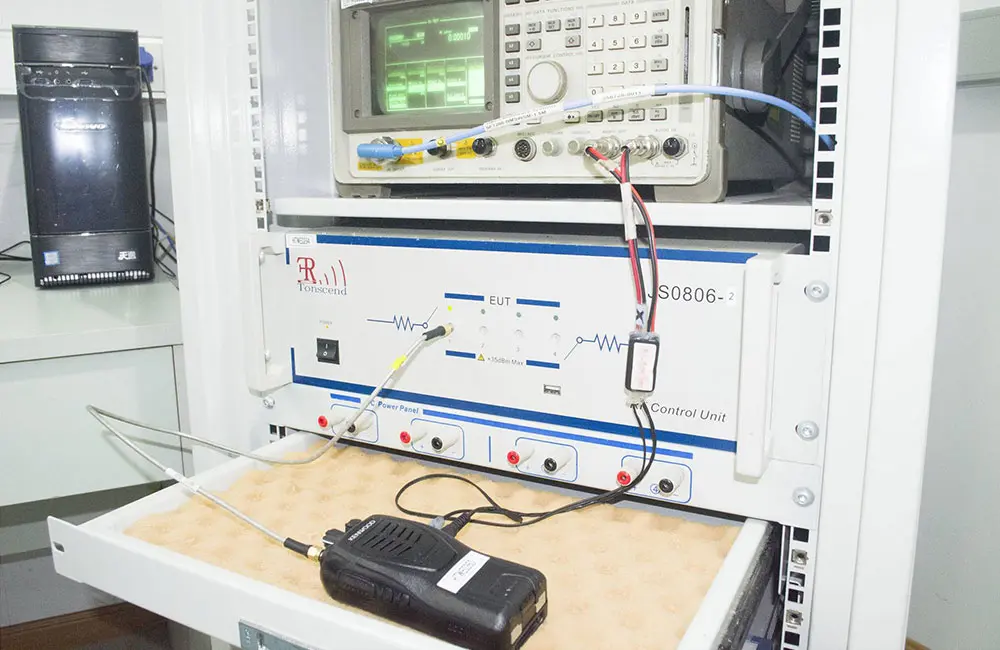
How Do I Get CE Certification?
What is CE certification
The “CE” mark is a safety certification mark regarded as the manufacturer’s passport to enter and circulate freely in the European market. CE stands for Conformité Européenne(European Conformity).
Any product bearing the “CE” mark can be sold in all EU member states without meeting individual national requirements, achieving free movement of goods within the EU.
In the EU market, the “CE” mark is a mandatory certification mark. Whether products are manufactured within the EU or imported from outside, they must bear the CE mark to circulate freely, indicating that the product complies with the essential requirements of the EU Directives on Technical Harmonization and Standardization. This is a legal requirement in the EU.

Applicable Regions for CE Certification
1. European Economic Area (EEA)members and European Free Trade Association (EFTA)countries generally require CE certification.
This includes 32 economic regions: the 27 EU member statesplus 4 EFTA countries.
2. EFTA non-EU countries(4): Switzerland, Norway, Iceland, Liechtenstein.
(Note: In Switzerland, ce marking is not mandatory domestically.)
3. Semi-EU country: Turkey.
Additional Notes:
1. Some countries in Africa, Southeast Asia, and Central Asiamay also accept CE certification.
2. After Brexit, the UK introduced ukca certification. The transition period, originally ending Dec 31, 2021, was extended to Dec 31, 2022, due to the pandemic.
3. While CE certification mainly applies to Europe, many non-European markets recognize it as a sign of compliance. Therefore, if a company plans to enter the European market, CE certification remains necessary.
Scope of CE Certification
① Power products:Communication power supplies, chargers, monitor power adapters, LCD power supplies, UPS, etc.
② Lighting products:Chandeliers, track lights, garden lamps, hand lamps, downlights, light strings, desk lamps, grille lights, aquarium lights, streetlights, energy-saving lamps, T8 tubes, etc.
③ Home appliances:Fans, kettles, speakers, TVs, mice, vacuum cleaners, etc.
④ Electronics:Earphones, routers, mobile batteries, laser pointers, vibrators, etc.
⑤ Telecommunication products:Telephones, wired/wireless phones, fax machines, answering machines, modems, data interface cards, etc.
⑥ Wireless products:Bluetooth devices, wireless keyboards/mice, wireless transceivers, wireless microphones, remote controls, Wi-Fi devices, wireless imaging systems, etc.
⑦ Wireless communication:2G/3G/3.5G/DECT phones (1.8G–1.9G).
⑧ Machinery:Engines, welding machines, CNC drills, grinders, lawnmowers, bulldozers, lifts, drills, dishwashers, water treatment machines, generators, printing machines, woodworking machines, excavators, rollers, food machinery, etc.
⑨ Medical devices and toys, among others.
Types of CE Certification Projects
1. Machinery Directive (MD)– 2006/42/EC
Covers general and hazardous machinery.
2. low voltage directive (LVD)– 50–1000V AC / 75–1500V DC range.
3. Electromagnetic Compatibility (EMC)– Ensures devices work properly without interference.
4. Medical Devices (MDD/MDR)– Applies to most medical devices except implantable or diagnostic ones.
5. Personal Protective Equipment (PPE)– Devices protecting health and safety.
6. Toy Safety Directive (TOYS)– Products designed for children under 14.
7. Radio Equipment Directive (RED)– For wireless communication and identification devices (RFID, radar, etc.).
8. Restriction of Hazardous Substances (RoHS)– Limits ten hazardous materials like lead, mercury, cadmium, etc.
9. reach regulation– EU regulation for chemical registration, evaluation, authorization, and restriction.
Types of ce certificates
1. Certificate of Compliance (COC):
Issued by third-party agencies with technical documentation and test reports. For medium-riskproducts.
2. EC Attestation of Conformity (AOC or EC Certificate):
Issued by an EU Notified Body (NB). For high-riskproducts.
3. Declaration of Conformity (DOC):
A self-declarationby the manufacturer. For low-riskproducts such as simple electronics or home appliances.
Required Technical Documentation
1. Product manual
2. Product differentiation description (if multiple models)
3. Mechanical drawings (assembly diagrams)
4. Circuit diagrams (schematics, wiring diagrams)
5. Product nameplate
6. List and certificates of main components
7. ISO9000 system certificate (if applicable)
8. Declaration of Conformity (DoC) — signed by manufacturer/importer, including:
① Product name/type/code
② Manufacturer/importer name & address
③ Applicable EN standards or directives
④ Signature, date, and name of responsible person
⑤ EU harmonized standards
⑥ Notified body (if involved)
⑦ Sometimes color photos and additional info are required.
ce certification process
1. Applicant fills out the form, submits product manual and technical documents.
2. Certification body evaluates applicable standards and provides a quote.
3. Applicant confirms project and submits samples.
4. Laboratory conducts product testing and reviews documents.
5. If compliant, test report and CE certificate are issued.
6. Applicant signs Declaration of Conformity and affixes CE mark.
CE Mark Information
1. Size Requirements:
The “CE” letters must be at least 5 mm high. Proportions must remain consistent.
2. Scaling:
The logo must be resized proportionally.
3. Non-compliance Issues:
Many domestic manufacturers fail to follow the exact proportions required.
4. Special Cases:
If the CE mark cannot be affixed directly to the product, it may be placed on the packaging or accompanying documents, with justification.
CE Marking Requirements
1. Must be visible, legible, and permanent.
2. Affixed by the manufacturer or authorized representative.
3. May appear on the product, packaging, manual, or certificate.
4. Must not be confused with other markings.
5. Product must pass conformity assessment per relevant EU directive.
6. Manufacturer must retain full technical documentation.
Common CE Directives
1. Toy Safety — 2009/48/EU
2. Transportable Pressure Equipment — 2010/35/EU
3. Restriction of Hazardous Substances — 2011/65/EU
4. Construction Products — 305/2011 (EU)
5. Pyrotechnic Articles — 2013/29/EU
6. Recreational Craft — 2013/53/EU
7. Civil Explosives — 2014/28/EU
8. Simple Pressure Vessels — 2014/29/EU
9. Electromagnetic Compatibility — 2014/30/EU
10. Non-Automatic Weighing Instruments — 2014/31/EU
11. Measuring Instruments — 2014/32/EU
12. Lifts — 2014/33/EU
13. Equipment for Explosive Atmospheres — 2014/34/EU
14. Radio Equipment — 2014/53/EU
15. Low Voltage — 2014/35/EU
16. Pressure Equipment — 2014/68/EU
17. Marine Equipment — 2014/90/EU
18. Cableway Installations — 2016/424 (EU)
19. Personal Protective Equipment — 2016/425 (EU)
20. Gas Appliances — 2016/426 (EU)
21. Medical Devices — 2017/745 (EU)
22. In Vitro Diagnostic Devices — 2017/746 (EU)
Importance of CE Certification
1. Enables free sale across EU member states.
2. Absence may result in fines or criminal penalties.
3. Products without CE marking may be rejected, returned, or destroyed by customs.
4. CE-certified products are more easily accepted by consumers, boosting sales.
Certification Timeline
Typically 7–20 working days:
① Regular electronic products: 7–10 days.
② Wireless products: about 3 weeks.
Certificates are generally valid for 3–5 years. If directives or standards are updated, renewal is required.
Validity and Renewal
CE certificates must be renewed if:
1. The directive is updated.
2. The EN standard version changes.
3. The certificate expires (usually after 5 years).
CE Certification Pitfalls
1. Using DOC instead of COC→ Customs may detain goods as “invalid certificate.”
Solution:Toys and electronics must use COC. DOC suits only low-risk items.
2. Expired certificate→ EU standards update every 2–3 years (e.g., RoHS 2.0 → 3.0).
Example:In 2022, a Chinese seller’s 50,000 toys were recalled due to outdated EN 62115.
3. Fake certification agencies→ Verify NB number on EU’s official website (e.g., NB 0123).
4. Missing additional certifications→
① Germany requires gs mark;
② France requires NF mark;
③ reach testing is mandatory for all products.
Email:hello@jjrlab.com
Write your message here and send it to us
 Infant Support Pillow 16 CFR 1243/1242 & ASTM
Infant Support Pillow 16 CFR 1243/1242 & ASTM
 BRM Registration Card Under CFR Part 1130 Regulati
BRM Registration Card Under CFR Part 1130 Regulati
 How to get a D-U-N-S® Number for US FDA Registrati
How to get a D-U-N-S® Number for US FDA Registrati
 Household Massage Devices Compliance in the China
Household Massage Devices Compliance in the China
 Compliance for the Global In Vitro Diagnostic (IVD
Compliance for the Global In Vitro Diagnostic (IVD
 Compliance Guide for Nebulizers in European and Am
Compliance Guide for Nebulizers in European and Am
 Cybersecurity Certification Service for EU RED Dir
Cybersecurity Certification Service for EU RED Dir
 ANATEL Certification Compliance Guide for Brazil M
ANATEL Certification Compliance Guide for Brazil M
Leave us a message
24-hour online customer service at any time to respond, so that you worry!




